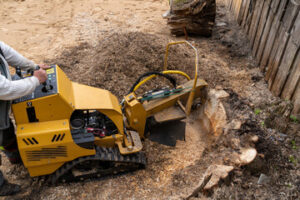A noticeable stench from your sinks, toilets, or drains isn’t just unpleasant—it could signal serious septic system issues. Ignoring these signs could lead to sewage backups or other costly problems.

Knowing the Top Signs Your Septic Tank Needs Professional Attention can help you prevent these issues. Click Here or read on to learn more!
Unpleasant Smells
Septic tanks are a great option for homeowners who live outside municipal sewer areas or want to save on monthly water bills. However, these systems must be inspected regularly to ensure they function properly. If your septic tank reaches capacity, this can cause sewage backups in your home’s drain lines and toilets. This is a huge health hazard and a serious plumbing problem that needs to be addressed immediately by a professional.
The most obvious sign of a full septic tank is the strong odor that often appears in and around your house. This is caused by the decomposition of solid waste inside the tank, which produces gases that have a very unpleasant odor.
If you notice a foul smell near or around your septic system, it’s important to have a professional inspect the tank and surrounding area right away. There could be a cracked or broken manhole cover that’s not sealing well, clogged or damaged septic tank vents, or structural issues like a faulty anaerobic septic system pump seal.
Overpowering odors also indicate your septic tank is close to full, which can lead to overflow and sewage spills in and around your home. To help prevent septic tank odors, it’s best to avoid flushing non-organic waste like cigarette butts, coffee grounds, cleaning products and trash. It’s also important to have your septic tank pumped every three to five years.
Standing water in your yard is another major sign that something’s wrong with your septic tank or its drainage field. This happens when the septic tank can no longer effectively drain wastewater into the drainage field, leading to a buildup of waste in your soil and yard.
If you’re experiencing these symptoms, it’s also a good idea to check your toilets for a dried-out wax seal. These seals are designed to prevent leaks from the base of your toilet and block septic tank odors in bathrooms but can dry out over time. If you suspect this is the case, replacing the wax seal is a quick and easy DIY task that can stop those lingering septic tank odors in your bathroom.
Pools of Water
When water pools around your septic system, it’s usually due to the tank filling up. When this happens, it’s a sign that wastewater is escaping from your home and into the yard, which can result in sewage backups, water damage, and potential health risks for you and your family. If you see standing water in your yard or around drains, call a professional right away to schedule a septic tank inspection and pump-out.
You may also notice that sinks, tubs, and toilets drain more slowly than usual when your septic tank needs to be pumped out. This is because a full tank doesn’t have enough room for solid waste to settle and break down, which can cause plumbing clogs. If you notice this issue, it’s a good idea to try using a septic-friendly drain cleaner first before calling in a professional.
Another telltale sign that your septic tank is overflowing is when the drain field begins to overflow and floods the surrounding area. Similarly, excess grass over the drain field can indicate that your septic tank is full and not properly absorbing wastewater.
If you see sewage backing up into your home, this is a serious issue that should be addressed immediately by a septic service professional. This situation can lead to serious health and safety issues for you and your family, as well as costly cleanup and repairs for your home.
A septic tank that is overflowing can also affect the quality of your drinking water. If the sewage is allowed to flow into your home, it can build up toxins in your water supply and cause health problems. The best way to prevent this is to ensure that your septic tank and drain field are pumped out regularly.
Although septic tanks are an integral part of most homes, they don’t always get the attention they deserve. By recognizing the warning signs that your septic tank needs attention, you can schedule regular maintenance and avoid expensive repairs down the road. For more information about septic systems, contact the professionals at Septic Blue today.
Slow Drainage
Your septic system is like the unsung hero of your property, quietly working to manage wastewater and keep your environment healthy. Despite this, it requires regular maintenance and professional inspections to ensure that it continues to function efficiently and effectively. If you notice any of the following signs that your septic tank needs professional attention, contact a septic service to schedule a septic tank pumping appointment as soon as possible:
A frequent occurrence of slow-flowing sinks, showers, or toilets is a common indicator that your septic system is nearing full capacity and needs to be pumped out. When a septic tank is full, it is unable to properly treat wastewater, leading to backups and slow drainage throughout your home. Ignoring this issue could lead to sewage spills and costly water damage, so it is important to schedule a septic tank pumping soon.
If your home has a foul smell, especially in the drains or yard, this could indicate that there is a clog in the ventilation pipe of your septic system, which prevents gasses from escaping. These gasses, including methane and hydrogen sulfide, are unpleasant and can be dangerous if inhaled or ingested.
You may also be noticing pools of standing water in your yard or garden area. This is a sign that the septic system drain field is saturated with water or has failed. The septic drain field (also known as the absorption field or leach field) is the part of your septic system that sieves waste into the ground for disposal. This is a critical component of your septic system, and if it fails, you will need to call a septic service immediately.
Frequent septic tank problems can be caused by many factors, such as a failing tank, a clogged or overflowing drain field, ground disturbance, root invasion, design and installation flaws, and more. However, you can make some small changes to reduce these issues, such as using septic-safe toilet paper, reducing the number of times you run the dishwasher or washing machine, and adding 8 to 12 inches of mulch around your tank, pipes, and drain field.
Gurgling Water
If you hear a gurgling sound coming from one or more of your sinks, tubs, or toilets, it could indicate that the septic tank is full and needs to be pumped. A septic tank that is too full prevents wastewater from flowing out of the drain field properly, which can lead to septic system failure and sewage backups inside your home. Fortunately, you can often avoid these more serious septic problems by scheduling regular septic tank pumping and maintenance.
Alternatively, the gurgling noises may be caused by a blockage somewhere in the pipes that connect your plumbing to the septic tank. This might be a clogged house sewer vent, a blocked drain line to the septic tank, or a blockage in the pipes that connect the septic tank to the drain field. While these issues are less severe than a septic tank overflow, they should still be addressed as soon as possible to prevent more serious damage to your home and yard.
Another possibility is that the gurgling noises are being caused by hydrogen sulfide gasses in your yard or drains. This smell is similar to rotten eggs and can be extremely unpleasant and even dangerous to your health if inhaled. If you notice this pungent odor, you must call in professional assistance to inspect and repair your septic system immediately.
A final option is that the gurgling noises come from your septic tank itself. This can be an indicator of a cracked or ruptured tank, which will need to be repaired or replaced immediately. A leaking or cracked septic tank can cause wastewater to flow into your drain field and contaminate your home’s soil and groundwater, so you must contact a professional as soon as possible.
Your septic system is like an unsung hero, working behind the scenes to manage wastewater and maintain a safe and healthy environment for your family and pets. However, just like any other system in your home, it requires regular attention and maintenance to ensure that it continues to function effectively. Recognizing the signs that your septic tank needs professional attention can help you stay ahead of potential problems and keep it running smoothly for years to come.
